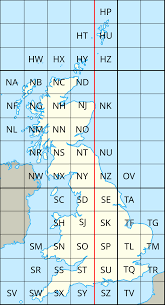Understanding the Role of the National Grid in the UK

Introduction
The National Grid is a vital infrastructure that connects electricity and gas supply chains across the United Kingdom. Its importance has surged in recent years due to the increasing demand for renewable energy, the need for energy security, and the ongoing transition towards a more sustainable energy future. Understanding the National Grid’s operations is essential for anyone interested in the UK’s energy landscape.
The Structure of the National Grid
The National Grid consists of an extensive network of high-voltage electricity transmission lines, substations, and interconnectors. It is responsible for transporting electricity from generation plants to local distribution networks, which ultimately supply homes and businesses. Approximately 98% of the UK’s energy needs are met through this system, making it a crucial component of the country’s daily operations.
Recent Developments in the National Grid
Recent events have highlighted the National Grid’s adaptability in the face of challenges. For instance, as of 2023, the UK has witnessed a significant shift towards renewable energy sources, with wind, solar, and nuclear power contributing to nearly 60% of the grid’s energy mix. In response to unprecedented demand spikes, particularly during extreme weather conditions, the National Grid has implemented advanced technology and smart grid solutions to manage supply effectively.
Sustainability Initiatives
The shift towards decarbonisation is an ongoing goal for the National Grid. With the UK government setting ambitious targets to reach net-zero carbon emissions by 2050, the National Grid is already working on various initiatives. The introduction of zero-carbon energy systems and innovative energy storage solutions is expected to enhance reliability and reduce emissions, thus aligning with national goals.
Future Outlook
Looking forward, the resilience of the National Grid will be increasingly tested. With growing energy demands and the expansion of electric vehicles and heat pumps, experts predict that without further modernization and investment, the grid could face significant pressures. The deployment of artificial intelligence and machine learning technologies is anticipated to further optimise grid performance and ensure it meets future requirements.
Conclusion
The National Grid’s role in the UK is pivotal, affecting both energy consumers and producers. As the country moves closer to its sustainability targets, understanding the functionalities and challenges of the National Grid becomes essential. The integration of innovative technologies and renewable energy sources will likely define the future of energy distribution, ensuring a secure, efficient, and eco-friendly power supply for all.








